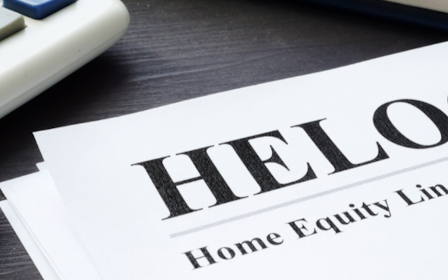Buying a home is considered by many to be one of the most significant investments of a lifetime, so it goes without saying, it must be well-protected. No matter if you’re getting a mortgage loan or paying for a house outright, it still makes sense to get coverage.
However, as you'll see, home insurance costs can be expensive, especially if you live in a state with natural disasters (e.g. Florida). While there are some ways you can reduce the cost of home insurance, it can also be determined by factors outside your control. Nonetheless, maintaining high-quality coverage is crucial in helping to avoid paying for massive repairs out of pocket.
Keep reading to discover how home insurance coverage works and what factors play a role in determining your monthly bill. Let’s dive in!
Understanding Homeowners Insurance Coverage
So, what does home insurance cover? A typical policy is broken down into multiple parts, including:
- Building Coverage—The main structure and any other structures on the property are covered from various incidents, such as fire, falling objects, and vehicular damage.
- Personal Property—If your belongings are damaged in a covered event, you can file a claim to recoup some of your losses.
- Liability Coverage—Helps cover costs if you are found responsible for someone getting injured or incurring personal property damage on your property.
- Additional Living Expenses—If your house is partially or completely destroyed, this section helps pay for living expenses (e.g. hotel stays) while your home is repaired.
When looking at your policy, you have to pay attention to coverage limits and deductibles. The deductible is the amount you must pay before the home insurance company covers anything, so the higher it is, the more out-of-pocket costs after an incident.
Also, you need to know the difference between replacement cost value (RCV) and actual cost value (ACV). RCV will cover the cost of replacing the item with a brand-new model, even if the newer model is more expensive. Typically, structural damage is covered with RCV.
ACV, however, only pays for the actual value of the item in its current state. Usually, personal property is covered with ACV, but you can upgrade to RCV (and pay higher monthly premiums).
Factors Influencing the Cost of Homeowners Insurance
When comparing average homeowners' insurance rates, it helps to know which factors will affect the cost of your coverage the most. Also, keep in mind that each provider weighs these factors based on their own calculations. So, one insurer may charge more than another, even if your coverage is nearly identical.
Location
The location of your home can affect your homeowner's insurance premiums in a few different ways, such as:
- Crime Rates—Areas with higher crime rates are more costly to cover because of the higher chance of a break-in.
- Natural Disasters—If you live in an area that's prone to disasters like hurricanes, tornadoes, or wildfires, your rates will typically be higher.
- Accessibility—Construction costs affect how much it takes to repair and rebuild the home, and those costs can be higher if you live in a remote area.
- Flood Plain—The National Flood Insurance Program (NFIP) has flood maps that show your home's risk of flooding. If you're in a flood zone, you may have to pay higher rates.
Age and Condition of the Home
Generally, older homes are more expensive to insure than newer ones because they're more costly to rebuild. Also, in some cases, an older home may contain outdated systems (i.e. electrical panels) that come with much higher risks. If the house is too much of a risk, you won't be able to buy a standard home insurance policy.
Fortunately, homeowners' insurance for new construction is often much cheaper because everything is brand new, and the house was built according to modern building codes.
Rebuilding Cost
As we mentioned, property damage is covered with replacement cost value (RCV). So, your homeowners insurance company will pay to rebuild the home with modern materials.
Unfortunately, the cost of building materials has risen sharply since 2020, meaning it's more expensive to restore a home to its original state after a disaster. Because insurance companies don't want to lose money, they raise rates accordingly. Again, new construction homes are generally cheaper because it's easier to match the rest of the home after partial destruction.
Coverage Limits and Deductibles
When choosing a homeowner's insurance policy, you must decide if it's better to get more coverage or less. More coverage means higher premiums, but it also means paying less out of your pocket for a covered event. For example, you can upgrade to RCV coverage for personal belongings so you can replace damaged items with brand-new ones after an incident.
Alternatively, you can opt for less coverage, so you don't pay as much per month. However, if disaster strikes, you're on the hook for more than you would be otherwise. For example, instead of having a $1,000 deductible, you can raise it to $2,000 and pay less each month.
Claims History and Credit Score
Insurance companies want to minimize their risk as much as possible. So, they'll pay attention to your credit history and whether you've made any claims in the past. If your credit score is low or you have made multiple insurance claims before, you'll have higher rates because you're seen as a higher risk.
Average Costs Across States
When asking how much does homeowners insurance cost, the answer depends on where you live. While the national average cost of homeowners insurance was about $1,300 a year in 2020, each state varies. Also, keep in mind that homeowner's insurance for new construction is still cheaper, no matter where you live.
As of 2020, here's a breakdown of the most and least expensive states to buy home insurance:
Most Expensive States
- Florida - $2,165
- Oklahoma - $2,040
- Louisiana - $2,038
- Texas - $2,000
- Rhode Island - $1,788
Least Expensive States
- Oregon - $735
- Wisconsin - $762
- Utah - $764
- Idaho - $810
- Arizona - $866
As you may have noticed, the most expensive states are ones that experience a high frequency of natural disasters. Florida, Louisiana, and Texas can experience hurricanes, while Oklahoma gets tornadoes regularly. By comparison, Oregon doesn't have many natural disasters, so it's the cheapest state for home insurance overall.
Keep in mind that average rates don't reflect each part of the state. Some areas may be cheaper than others, while others might be more expensive.
Strategies for Saving Money on Homeowners Insurance
If the answer to "How much is homeowners' insurance?" is higher than you'd like, you don't have to settle for expensive premiums. Fortunately, you can be proactive about reducing your rates in a few different ways, including:
Home Security Systems
Typically, most insurers will reduce your rates if you install a security system. However, before doing anything, be sure to talk with your provider about specific details. For example, one insurer may offer discounts for cameras or motion-activated lights, but they don't care about alarms or window protection.
Knowing which elements count the most allows you to customize your home security system to maximize your savings. Also, you can usually save more if you're in a relatively safe neighborhood.
Policy Bundling
Most home insurance providers also offer auto and life insurance policies. In many cases, if you bundle your homeowner's insurance with other coverage types, you can save on each policy. That said, this may not always be feasible or beneficial, so make sure to weigh your options and discuss them with your provider.
Higher Deductibles
As we said, your deductible is the amount you must pay before the insurance company covers anything. So, increasing your deductible means the insurance company pays less, so they charge you less for monthly premiums.
That said, home insurance doesn't work like health insurance. The deductible isn't a total per-year cost. This means if you make multiple claims in a year, you must pay each claim's deductible. So, if the amount is too high, you may not get much from the insurance company, meaning you might have to pay for repairs out of pocket.
Choosing the Right Insurance Provider
Every insurance provider has its own systems to determine the cost of your policy. So, it's best to compare rates from different insurance companies before making a final decision. Here are some factors to consider when looking at different companies:
- Customer Reviews—Current customers can tell you a lot about a provider, such as whether they're responsive when filing a claim or if they take a long time to pay out.
- Customer Service Options—Ideally, your insurer will give you multiple options for filing a claim or asking questions about your policy. So, look for providers that offer multiple communication options, such as live chat, email, phone, or SMS messaging.
- Smooth Claims Service—Some insurance companies have an app that allows you to file a claim, communicate with your adjuster, and submit photos and documents. Other insurers may make you jump through hoops to submit information or file a claim, making it harder to get money out of your policy.
- Coverage Options—Your coverage needs will likely change over time, so you want an insurance company that can adapt to those needs. For example, you may need additional coverage for jewelry, or you might want to increase your liability insurance.
The Bottom Line About Homeowners Insurance
As you can see, choosing the right homeowner's insurance is a process, but the more time you take to choose a provider and coverage, the better your protection. Peace of mind is a valuable thing, so it may be best not to settle for the cheapest rate you can find.
On the hunt for home insurance? Our fellow affiliate, IHL Home Insurance Agency, specializes in new home property insurance and has access to top-rated insurance carriers. Their annual premiums are often 20% to 30% lower than other insurance agencies.
See how much you can save with a complimentary, no obligation quote today!



